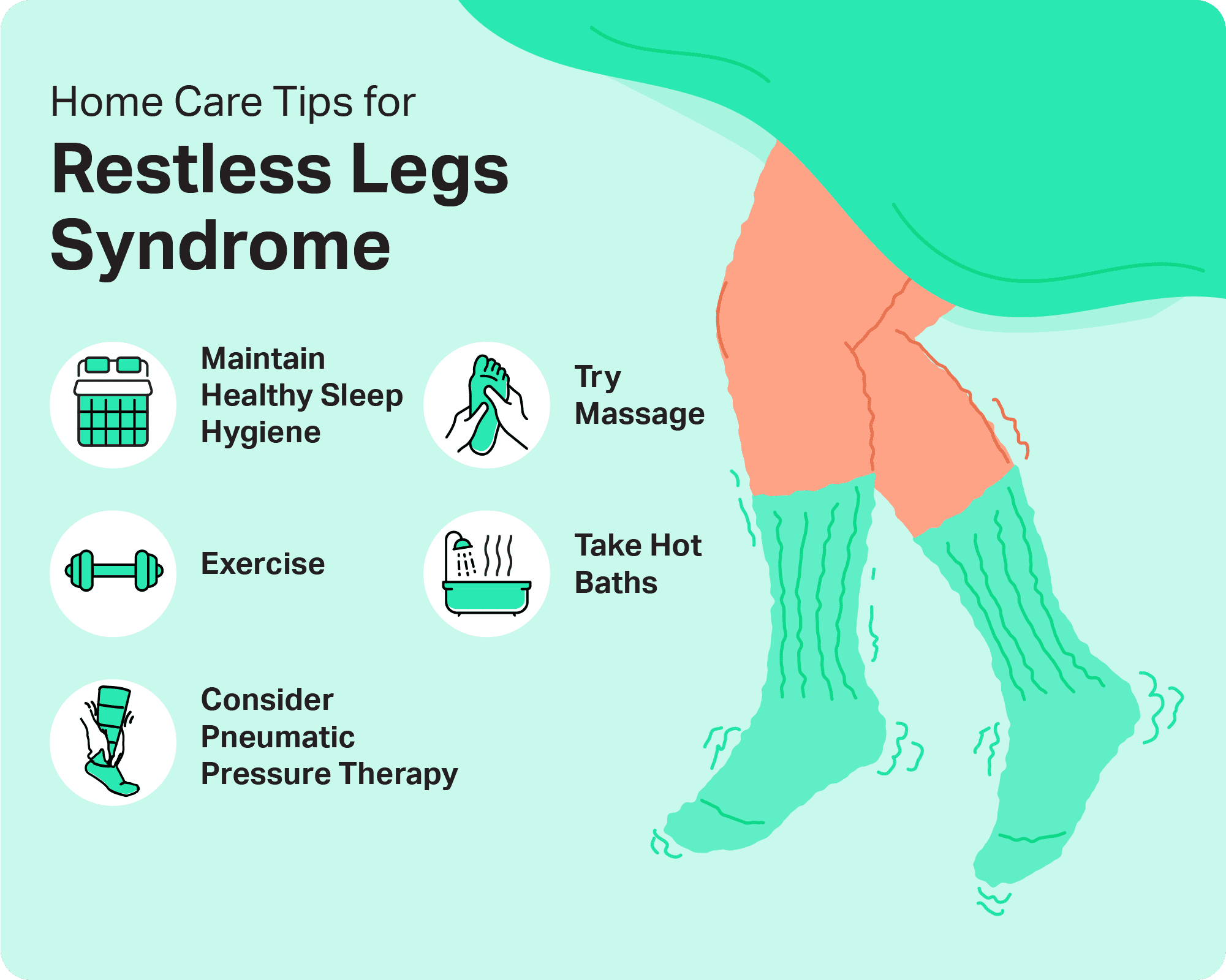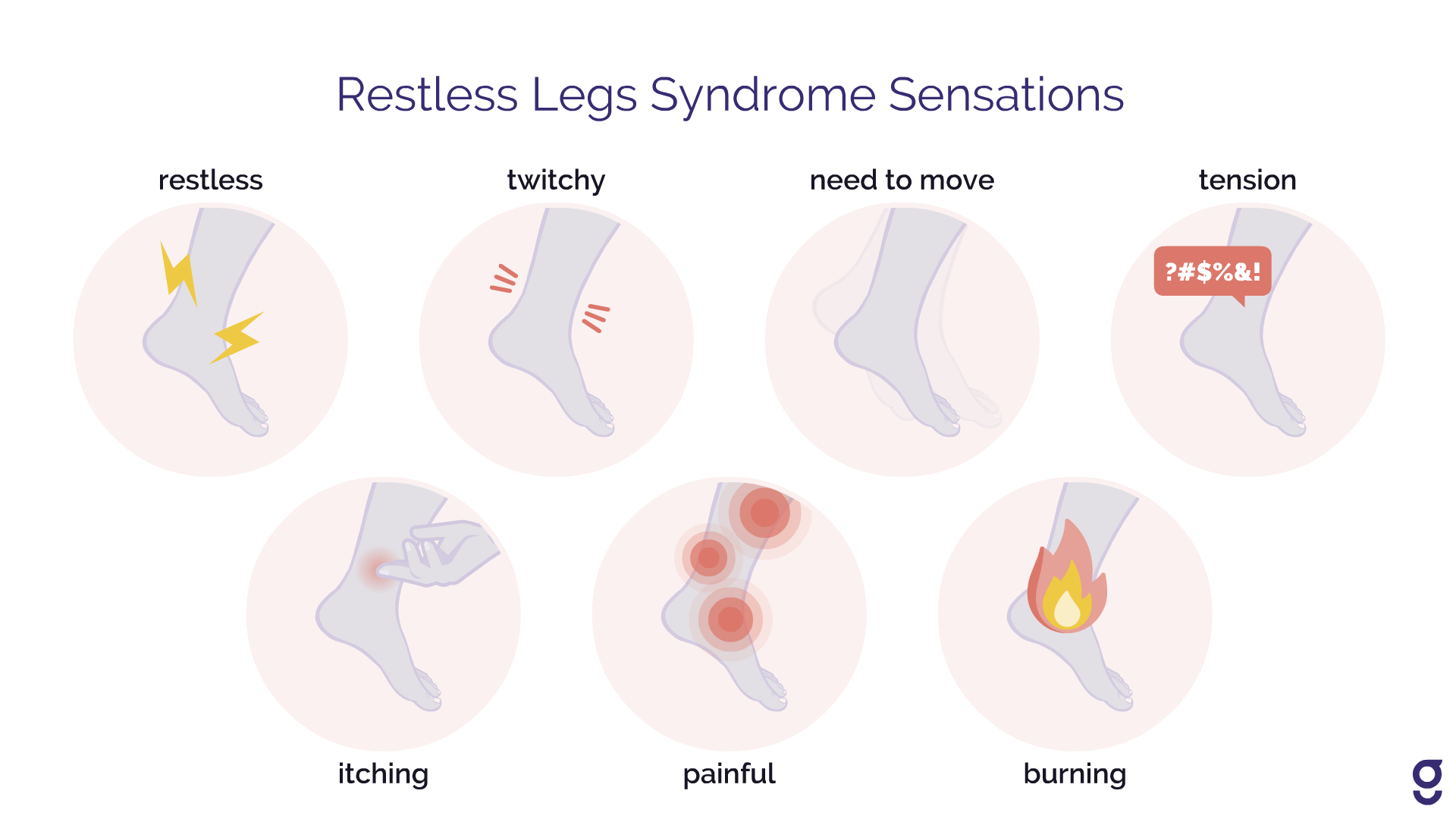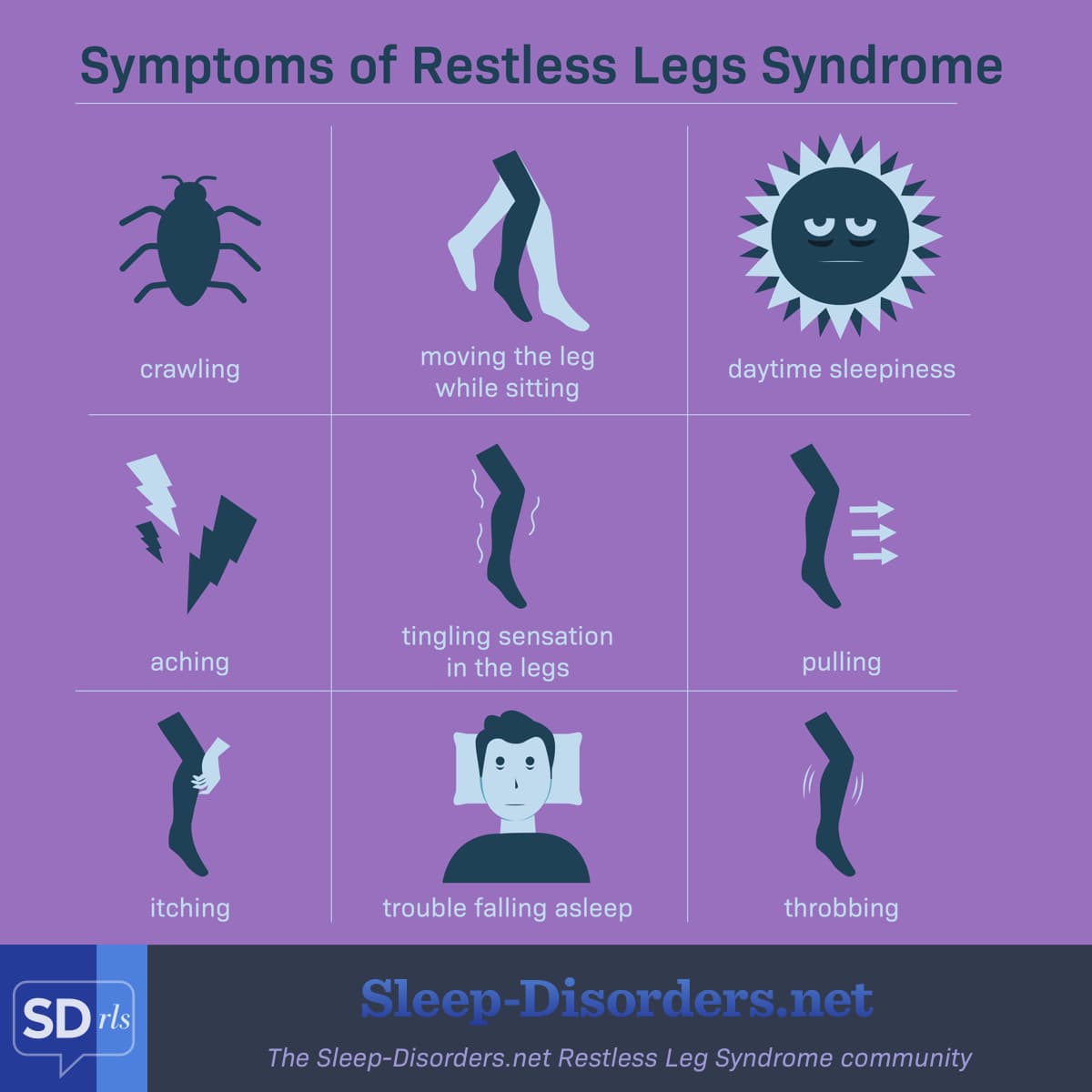RLS Meaning Slang - Unpacking Restless Legs Syndrome
- Georgia Brewer
- Hikey Onlyfans
- Bezos Store Discount Code
- Dreams Usa
- %D8%BA%D8%B2%D8%A7%D9%84 %D8%B1%D8%AC%D8%A8%DB%8C%D8%A7%D9%86
Have you ever heard someone mention "RLS" in casual conversation, perhaps in a way that makes it sound like a funny or simply annoying quirk? It's almost as if the term has taken on a life of its own, becoming a sort of shorthand for any kind of fidgeting or general discomfort. This casual use can, in some respects, hide what the actual medical situation truly involves. What might sound like a simple slang term for restless fidgeting is, actually, a recognized condition that brings with it some rather real physical feelings. People often use "RLS" to describe a feeling of being jumpy or unable to sit still, but the real experience is usually a bit more intense than just a general need to move around.
This common way of talking about "RLS meaning slang" can sometimes make light of a condition that causes quite a bit of trouble for those who live with it. When people toss the term around, they might not realize it refers to a very strong, almost overwhelming, impulse to shift one's legs. This impulse, you know, usually comes from an unpleasant sensation deep within the legs themselves. It's not just about being bored or having too much energy; it's a feeling that genuinely compels someone to get up and move, just to find some sort of relief. So, it's pretty clear that the casual use of the term doesn't quite capture the full scope of what people go through.
Today, we're going to look past the everyday chatter and explore what RLS truly means, both in its medical sense and how it's sometimes spoken about in a more casual way. We'll unpack the actual feelings people describe, how doctors figure out what's going on, and what steps folks can take to feel better. We'll also touch on some of the ongoing studies and even a personal account of finding some calm. Basically, we're aiming to give you a clearer picture, moving beyond the simple "rls meaning slang" and getting to the heart of the matter.
Table of Contents
- What Does RLS Really Mean Beyond the Slang?
- How Do Folks Talk About RLS Symptoms?
- Getting a Handle on RLS - What's the Process?
- What Can Be Done About RLS When It Feels Like There's No Way Out?
- Looking Ahead - What Are Researchers Discovering About RLS?
- A Personal Story - Finding Relief from RLS Slang
What Does RLS Really Mean Beyond the Slang?
When someone says "RLS," they are typically referring to something called Restless Legs Syndrome. This isn't just a simple case of having fidgety legs; it's a situation where a person experiences a very strong, almost irresistible, push to move their legs. This powerful urge, you know, usually comes hand-in-hand with some pretty unpleasant sensations that happen deep inside the leg muscles. It's not something you can just ignore or push through easily. The feeling is so compelling that moving the legs becomes the only way to get a moment of peace from the discomfort. It's a bit like having an itch you absolutely have to scratch, but the itch is inside your legs and the only relief is movement. That, in essence, is what the medical term describes, quite unlike any casual "rls meaning slang" you might hear.
The sensations themselves are pretty varied, too. People describe them in all sorts of ways, which makes it a little hard to pinpoint if you haven't felt it yourself. Some say it feels like something is crawling under their skin, a kind of creepy-crawly feeling that just won't quit. Others describe a throbbing sensation, a steady beat of discomfort that pulses through their legs. And then, there are those who feel something like an electric current, a jolt or a buzz that runs through their limbs. These feelings are what drive the need to move, and they can be quite disruptive, especially when you're trying to relax or get some rest. So, while the slang might hint at general restlessness, the reality is a specific kind of internal agitation that demands attention.
It's interesting, too, that these sensations don't always show up all the time. For some people, these feelings pop up only every now and then, perhaps when they've been sitting still for a while. Imagine, for instance, being at a movie theater, trying to enjoy a film, and suddenly your legs start acting up, making it nearly impossible to sit still. Or, think about a long plane ride, where you're stuck in a seat for hours, and that urge to move just gets stronger and stronger. These situations, where you're seated for a long stretch, are common triggers. This occasional nature means that for some, the problem might not seem like a big deal, but when it hits, it really hits, causing a lot of distress and making simple activities quite difficult. That's really the core of it.
How Do Folks Talk About RLS Symptoms?
When people talk about what RLS feels like, they often focus on the main symptom: that undeniable urge to move their legs. This urge, you know, isn't just a vague feeling; it's usually paired with a distinct sense of discomfort. The discomfort itself can show up in different parts of the legs. It might be in the thighs, a heavy or strange sensation there. Or, it could be in the calves, that fleshy part of your lower leg, feeling tight or like something is bubbling beneath the surface. And sometimes, the feet are where the sensations are most noticeable, a tingling or an odd pressure that just won't let up. So, the "rls meaning slang" might suggest a simple twitch, but the actual feelings are far more specific and bothersome, really.
The language people use to describe these feelings gives us a good picture of how truly odd and intrusive they can be. "Crawling" suggests something alive moving under the skin, a very unsettling thought. "Throbbing" brings to mind a steady, rhythmic pain or pressure, a constant reminder of the discomfort. And "electric sensation" makes you think of a current, a buzz or a shock that travels through the muscles. These aren't just minor annoyances; they are feelings that can disrupt sleep, make relaxing nearly impossible, and generally get in the way of daily life. It's not just a general sense of being restless; it's a particular kind of internal agitation that makes you want to get up and walk around, even when you'd rather be still.
Is That Uncomfortable Feeling in My Legs Really RLS Slang?
It's a fair question to ask if what you're feeling lines up with what's commonly called RLS, especially when you hear "rls meaning slang" tossed around so casually. The true indicator is that combination of an urge to move *and* an uncomfortable feeling. If you just feel like moving your legs because you're bored or have a lot of energy, that's probably not it. But if there's a distinct, unpleasant sensation – that crawling, throbbing, or electric feeling – that *makes* you want to move, and moving actually helps, then it might be. This feeling often gets worse when you're resting, like when you're sitting on the couch in the evening or trying to fall asleep in bed. It's a bit of a pattern, you see, that helps distinguish it from just general fidgeting. So, if your leg discomfort fits this description, it's worth looking into it a bit more deeply.
Getting a Handle on RLS - What's the Process?
Figuring out if someone has RLS usually involves a talk with a healthcare professional. They won't just guess; they'll take the time to really listen to your story, which is called taking your medical history. This means they'll ask you about any past health issues, other conditions you might have, and any medicines you take. But most importantly, they'll ask you a lot about your symptoms. They'll want to know what you feel, when you feel it, how often it happens, and what makes it better or worse. This conversation is really key, you know, because there isn't a single test, like a blood test or an X-ray, that can point directly to RLS. So, the diagnosis, in a way, really relies on what you tell them about your experiences.
The doctor will listen carefully for specific patterns in what you describe. They'll be looking for that strong urge to move your legs, coupled with those unpleasant sensations. They'll also want to know if these feelings get worse when you're resting or inactive, and if moving your legs makes the feelings go away, even if only for a little while. Another thing they'll consider is if these symptoms tend to happen more in the evening or at night. All these pieces of information, when put together, help paint a picture. So, it's pretty much a conversation-based process, where your detailed account of what you're experiencing is the most important piece of the puzzle. This helps them understand if what you're feeling aligns with the typical presentation of RLS, rather than just some casual "rls meaning slang" description.
What Can Be Done About RLS When It Feels Like There's No Way Out?
It can feel pretty frustrating when you're dealing with something like RLS, especially if you've heard that there's no magic fix. Some doctors, you know, might even tell people with RLS, or similar conditions like fibromyalgia, that they just have to learn to live with it. This kind of message can be pretty disheartening, making people feel like there's no hope for relief. It's a tough pill to swallow when you're constantly feeling that urge to move, that discomfort, and you're told it's just something you have to put up with. But, actually, the goal of managing RLS is usually to make those uncomfortable feelings less bothersome. It's about finding ways to calm the symptoms, even if the condition itself doesn't completely disappear. So, while a "cure" might not be on the table for everyone, finding ways to feel better certainly is, which is a different perspective than just accepting the problem.
Can Simple Home Comforts Help with RLS Slang Sensations?
For many people, some very simple steps taken at home can actually make a difference in easing the feelings associated with RLS, even those that get dismissed as "rls meaning slang." One common suggestion is to take a warm bath. The warmth can help relax your muscles and, for some, it brings a temporary calm to those restless feelings. Another thing people find helpful is massaging their legs. Gently rubbing the muscles can sometimes soothe the discomfort and lessen the urge to move. Applying warmth, perhaps with a heating pad or a warm compress, can also provide some relief. These aren't complicated medical procedures; they're just everyday comforts that might offer a little bit of peace when those sensations start to act up. So, it's worth trying these things out to see if they help you feel a bit more settled.
Your care team, the people who look after your health, will work with you to figure out the best approach. They'll consider your specific symptoms – what they feel like, how often they happen, and how much they bother you. They'll also think about how RLS affects your daily life. For example, if it's keeping you from sleeping, that might mean a different approach than if it only bothers you occasionally during the day. So, the treatment plan isn't a one-size-fits-all kind of thing; it's pretty much put together just for you, based on your unique situation. This personalized approach is really important, as what works for one person might not work for another, so it's a matter of finding what brings you the most comfort and calm.
Looking Ahead - What Are Researchers Discovering About RLS?
There are medical professionals, like those at places such as the Mayo Clinic, who spend their time studying conditions that affect the nervous system, which includes RLS. These experts, you know, are looking into what might cause RLS in the first place. They're exploring things like genetic factors – whether RLS runs in families or if certain genes make someone more likely to get it. They're also looking at environmental factors, which are things in our surroundings or lifestyle that might play a role. It's a bit like being a detective, trying to piece together all the clues that lead to why someone develops this condition. Their goal is to get a better handle on the root causes, which could eventually lead to more effective ways to help people.
Beyond trying to understand the causes, these researchers are also working hard to find new ways to treat RLS. This means they're looking for different kinds of medicines or therapies that could offer more relief than what's currently available. They're always on the lookout for fresh ideas and approaches. So, even though some people might feel like they just have to live with RLS, there are dedicated individuals working to improve things. This ongoing study and search for new treatments offers hope for those who are struggling, suggesting that the conversation around "rls meaning slang" might one day include stories of more widespread and lasting comfort for many.
A Personal Story - Finding Relief from RLS Slang
Sometimes, the most compelling stories come from personal experience. One individual shared that for twelve years, they struggled with RLS, those uncomfortable sensations and the constant urge to move. It sounds like a really long time to deal with something like that, doesn't it? But then, something shifted. They started using THC and CBD oil, and in a remarkably short time – just two weeks – their RLS symptoms completely went away. This is, you know, quite a significant change, especially after more than a decade of dealing with the problem. It highlights how different things can work for different people, and how sometimes, relief can come from unexpected places. This personal account suggests that what might be dismissed as "rls meaning slang" for some is a very real, very impactful condition for others, and finding something that helps can be truly life-altering.
This personal account also brings up some important questions. While this person found amazing relief, they are also wondering about the future. Will this positive effect last a long time? And will they experience any unwanted side effects from using THC and CBD oil? These are very valid concerns, as any new approach to managing a condition can come with its own set of unknowns. Their experience, however, does show that even for conditions where relief seems hard to come by, there are always new possibilities being explored, and personal journeys can offer valuable insights into what might help others. It's a reminder that the path to comfort is often a very personal one, and what works for one person might be worth considering for another, always with careful thought and guidance.
So, we've explored what RLS truly means, moving past the casual "rls meaning slang" to understand the real feelings of an overwhelming urge to move and the discomfort that goes with it. We've talked about how doctors figure out if someone has it, relying on detailed conversations about symptoms rather than a single test. We also looked at how treatment often focuses on making symptoms less bothersome, and how simple home remedies like warm baths and massages can offer some comfort. Plus, we touched on the ongoing efforts by researchers to find out more about RLS and discover new ways to help, alongside a personal story that shows how individual approaches can bring significant relief. It's all about getting a clearer picture of this condition and the many ways people try to find peace from its effects.

Restless Legs Syndrome: Symptoms and Causes

How to Identify and Treat Restless Leg Syndrome | Goodpath

What Are Symptoms of Restless Legs Syndrome?